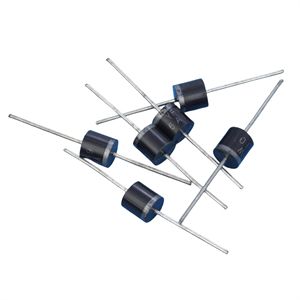Date:2024-11-23 Categories:Product knowledge Hits:573 From:Guangdong Youfeng Microelectronics Co., Ltd
Under normal circumstances, there is only a very small current in a reverse biased PN junction. This leakage current remains constant until the reverse voltage exceeds a specific value, after which the PN junction suddenly begins to conduct with a large current.
This sudden and significant reverse conduction is called reverse breakdown, and without some external measures to limit the current, it may lead to device damage. Reverse breakdown typically sets the maximum operating voltage of solid-state devices. However, if appropriate preventive measures are taken to limit the current, the reverse breakdown junction can serve as a very stable reference voltage.
One mechanism that leads to reverse breakdown is avalanche multiplication. Consider a reverse biased PN junction. The depletion region widens as the bias increases, but not fast enough to prevent the strengthening of the electric field. The strong electric field accelerates some charge carriers to pass through the depletion region at very high speeds. When these charge carriers collide with atoms in the crystal, they collide with loose valence electrons and generate additional charge carriers. Because a carrier can generate thousands of additional carriers through impact, just like a snowball can create an avalanche, this process is called avalanche multiplication.
Another mechanism of reverse breakdown is tunneling. Tunneling is a quantum mechanism process that enables particles to move a small distance regardless of any obstacles present. If the depletion region is thin enough, charge carriers can jump through it through tunneling. The tunneling current mainly depends on the depletion region width and the voltage difference at the junction. The reverse breakdown caused by tunneling is called Zener breakdown.
The reverse breakdown voltage of the junction depends on the width of the depletion region. The wider the depletion region, the higher the breakdown voltage required. As discussed earlier, the lighter the doping, the wider the depletion region, and the higher the breakdown voltage. When the breakdown voltage is below 5 volts, the depletion region is too thin, mainly due to Zener breakdown. When the breakdown voltage is higher than 5 volts, it is mainly avalanche breakdown. The PN diodes designed to primarily operate in a reverse conducting state are referred to as Zener diodes or Avalanche diodes depending on the dominant operating mechanism. The breakdown voltage of a Zener diode is below 5 volts, while the breakdown voltage of an avalanche diode is above 5 volts. Usually, engineers refer to them as Zener diodes regardless of their working principle. Therefore, 7V Zener diodes that mainly rely on avalanche breakdown may be confusing.
In fact, the breakdown voltage of a junction is not only related to its doping characteristics but also to its geometric shape. The above discussion analyzed a planar junction consisting of two uniformly doped semiconductor regions intersecting in a plane. Although some true junctions approximate this ideal situation, most junctions are curved. Curvature enhances the electric field and reduces the breakdown voltage. The smaller the curvature radius, the lower the breakdown voltage. This effect has a significant impact on the breakdown voltage of thin junctions. Most Schottky diodes have a clear fault at the edge of the metal silicon interface. Electric field enhancement can greatly reduce the measured breakdown voltage of Schottky diodes, unless there are special measures to weaken the electric field at the edge of the Schottky barrier.

Previous: Classification, Structure, and Principle of MOSFET